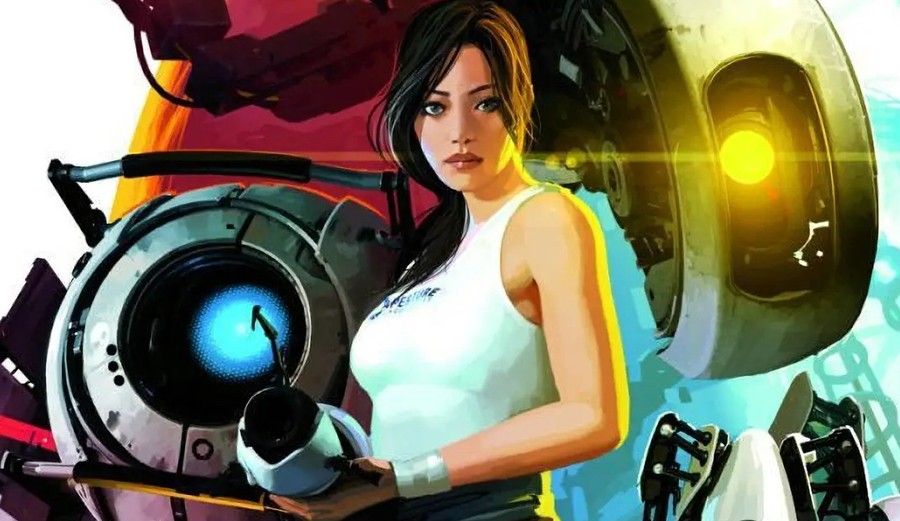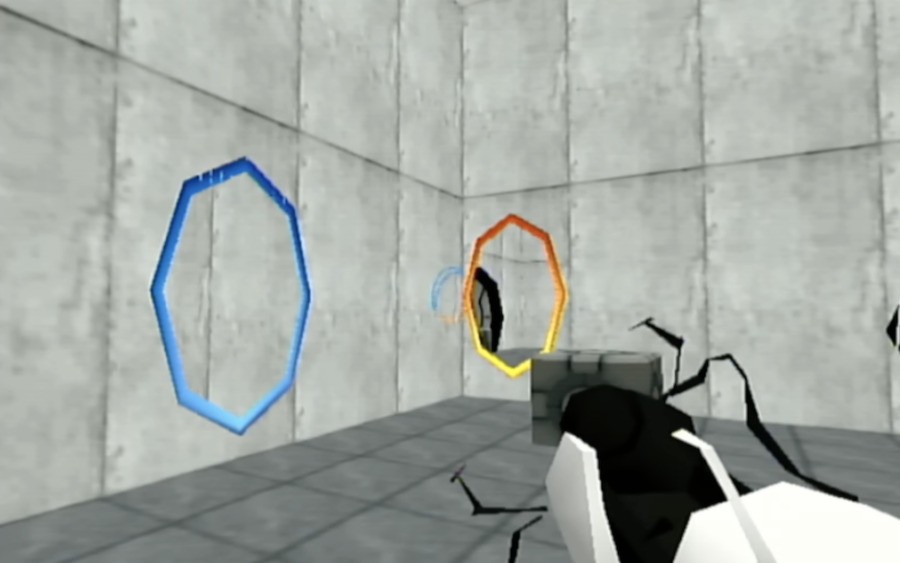
Update #4 [Thu 11th Jan, 2024 10:15 GMT]: Portal 64 programmer James Lambert has published a video explaining why the project was taken down and has said he doesn't blame Valve for taking action (thanks, PC Gamer).
"I don't blame them at all," he said in the video. "I don't think you should either. Don't be mad at Valve here. The project was probably doomed to be taken down from the beginning... I'm pretty happy with how far I got with it."
While Portal 64 might be dead, Lambert says he's got some exciting ideas in the pipeline. "I'm thinking I want to create an original game and develop it simultaneously for the Nintendo 64 and PC. That way, it's an interesting project that runs on N64, but I also have a way to easily monetize that and have a wide audience of people who could buy it."
Update #3 [Thu 11th Jan, 2024 10:15 GMT]: In his latest Patreon update, published yesterday, James Lambert has unfortunately announced the end of the Portal 64 project, stating that Valve had recently got in touch and asked him to take down the project due to it depending "on Nintendo's proprietary libraries".
Lambert states he plans to continue his YouTube channel and Patreon and has a ton of exciting ideas he wants to do in the future, including a take on virtual reality powered by the N64, but he understands if people decide to pull their support from the Patreon given this latest turn of events.
Here is his statement in full:
"So I have been in communication with Valve about the future of the project. There is some news and it isn’t good.
"Because the project depends on Nintendo’s proprietary libraries, they have asked me to take the project down. I am letting all you know before so you can choose to withdraw your support before the next payment cycle. I do still plan on continuing the channel. I have plans to do VR powered by the N64, a computer that runs on air pressure, and some other ideas kicking around in my head.
"I understand if you no longer support the channel but if you do stick around let me know what sorts of projects you would like to see. I may start a new game of my own or continue to find interesting ways to push N64 hardware. I haven’t entirely decided what I will do yet.
"Also, but (sic) sure to generate the latest ROM before I take the ROM patcher down."
Something worth noting is that Portal 64 isn't the only project that Valve has shut down in the last 24 hours with the company also reportedly reaching out to the developers of Team Fortress: Source 2 (a source 2 recreation of Team Fortress 2) to issue a DMCA takedown on all of its public GitHub repositories and forks made by the community.
In a statement on Twitter, the developer behind that project AmperSoftware revealed it was already considering the future of the project due to the current code being unusable with s&box's recent engine changes, but stated that this DMCA was the final "nail in the coffin".
Update #2 [Fri 5th Jan, 2024 09:30 GMT]: Another new build has just been released for Portal 64 — the N64 demake of the original Portal from fan developer James Lambert.
Portal 64: The First Slice is available to download for free using Lambert's custom patcher and introduces an updated version of the portal gun, rounded portals, and fixes for some of the z-fighting issues from earlier versions. It includes 13 of the original game's test chambers, with the plan being to get all of the original 19 levels into the finished game.
Lambert has released a new video to commemorate this incredible milestone, showing off some footage of the build and an awesome Portal-themed N64 console and controller sent in by a supporter of the channel bloodykieren. He's also now started a Patreon, so if you want to support the project and the videos directly, you can head over there.
Update #1 [Wed 6th Sep, 2023 13:00 BST]: It's been over a year since we last checked in on James Lambert's impressive Portal demake Portal 64 and a lot has changed in that time (which we felt was worth highlighting).
The demake now has a main menu/pause menu (with saving & loading options), the ability to customize the control scheme to use two N64 controllers, security cameras, and vertex lighting. Chell has also been implemented too, along with a bunch more test chambers to play through.
If you fancy giving the latest build a try, you can grab it now from Lambert's GitHub as a patch. Though, bear in mind, you'll need access to a copy of the original Portal on PC in order to run it. This is a measure that the developer has taken to hopefully prevent the project from being DMCA'd by Valve in the future.
Original Story [Thu 22nd Jun, 2023 11:00 BST]: Over the last four months, the fan creator James Lambert has been documenting the development of his Portal demake, Portal 64, over on YouTube.
It's an incredible project and one that will likely have you wondering how it is at all possible that the developer has managed to replicate the game's Portal mechanic on hardware released 11 years prior to Portal's launch. Well, in his most recent video, Lambert finally spilled the beans on how he managed to pull it off, breaking down the process in fairly in-depth detail.
According to his explanation, the effect that he has achieved uses the same technique that is behind rendering split-screen in multiplayer games, except that here the two screens overlap as opposed to being positioned one on top of the other. He explains that this can create some issues with objects from the two views leaking into one another, but luckily he has come up with a workaround. As he goes on to say, he uses the Z-Buffer (a chunk of memory that keeps track of how far away pixels are from the camera) to prevent distant items from being drawn over those that are meant to be closer, doing this by rendering the portal view in the second half of the buffer range. Then from here, he creates a hole in the wall and places a transparent overlay over the top of it, to prevent objects behind the wall from rendering over the top of the portal view.

You can watch the full video below to see how this works in practice and also to see a short explanation of how Lambert has recreated the emancipation grid from the end of the companion cube levels. So far, the demake looks incredibly impressive, with this latest explanation doing nothing to blunt our amazement of what Lambert has been able to achieve.

